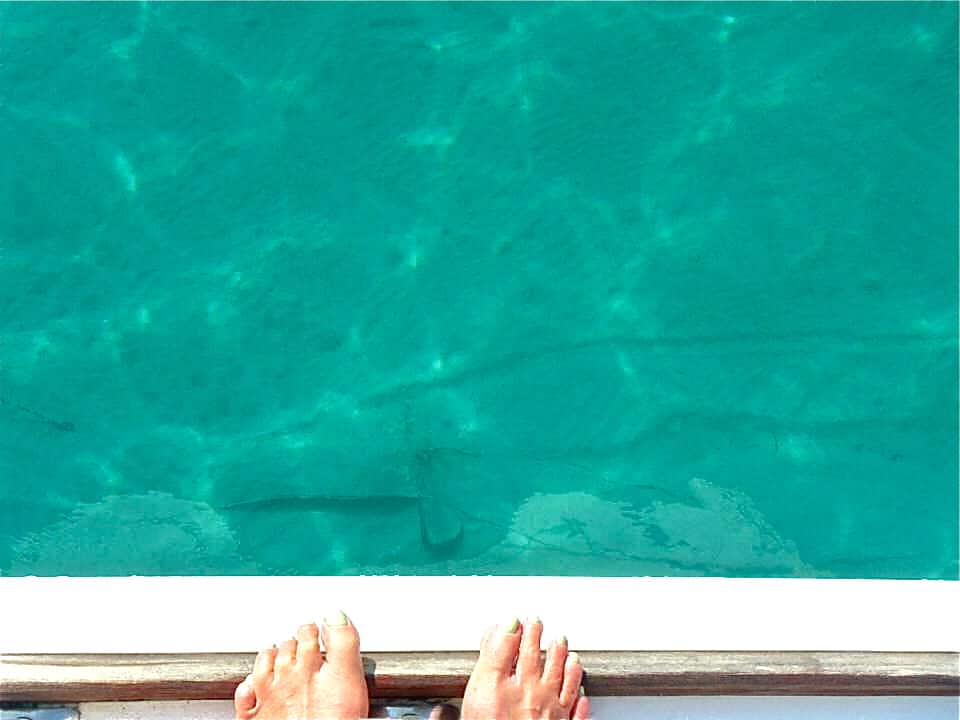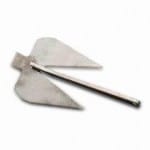International cruiser Rod Waterhouse shares his views on one of the most controversial aspects of cruising… anchoring.
Rod, a DBY owner and senior broker, enjoys sailing into the unknown, has cruised the planet several times and still has more to see. He offers up some sound advice to beginner sailors and curious cruisers on what works for him.
Having cruised the world on various boats since the mid 1980s, I found out the hard way how and how not to anchor and what anchors work. My view is from experience and logic and I hope you find it helpful.
It took me several years to break the habit of listening to sellers of anchors and worse… inexperienced cruisers and instead form my own opinion.
With my family, we had a number of years where a reasonable blow at anchor or dramatic wind change often led to us taking off towards peril with my huge CQR anchor bumping along the bottom.
Underwater Investigation
Fortunately whilst anchored in the “lee” of Martinique on our 473 Beneteau “Bridget” in 45 knots of wind offshore, I had the time to investigate and understand the basic principles of how an anchor works or not.
In this location, we were anchored in nice white sand, with 8 metres of depth. We had 50 metres of chain out but we were continually resetting the anchor as the big bullets hit and set us in motion.
Along side us was a charter 50ft Beneteau on typical charter short scope that just sat there not moving with the novice crew oblivious to the dilemma we had happening next door.
So donning the scuba gear I set out to investigate!
Expecting the charter Beneteau to be bolted to the bottom, I found them held by a simple 20kg Brittany anchor which in fact Beneteau back then supplied as standard issue…I could not believe it. It was in deep and not looking to move.
I swam over to my 25kg CQR plough that I had bought recently in S. Marteen to replace my ugly standard issue 20kg Brittany…and watched.
With every major gust, the boat yawed sideways and the CQR would creep. It became obvious that the bearing area of the flukes of the CQR is just not enough to resist. Most of the time it would be in sideways with only one of the flukes gripping. This coupled with a bit of sideways pull was breaking it out after which it struggled to reset.
I went back on my boat, switched out the 25kg CQR to my standard Beneteau 20kg Brittany and my anchoring problem had been resolved and has been ever since.
What do the Really Really Big Boats Use?
So here is my opinion now and I am sticking to it. The logic was like a light bulb turning on.
What anchors do 99% of commercial shipping use?
On their bows …
Do you see the iconic CQR plough?
Do you see any with the fancy, expensive roll over anchors?
How about the famous but lightweight special hold in anything anchors that cost more than the boat?
The answer is no.
So what does the multi-trillion dollar fleet of commercial boats use to anchor in 99% of cases?
Guess what… they us the most basic anchor you can imagine. The cheapest and simplest in construction – a heavy twin fluked version of the humble Danforth anchor.
Why does it work?
In all but heavy rock and weed, the Brittany hits bottom and sets either way up. The heavy sharp flukes penetrate the mud or sand and the large area of the 2 flukes and weight grip like all… how obvious!
So what have I used, live and swear by?
The yachting version of this anchor is the humble Brittany anchor. It can be hard to find but persist.
It may not look fantastic and may not fit on your chromed bow-roller perfectly, but it will hold in any location where most of us choose to anchor… mud or sand.
So what about if you are in weed or rock?
My answer is find mud or sand or your nearest marina. Otherwise you will need to carry 5 anchors..
Anchoring in weed and rock invariably leads to fouled anchors or dragging with anything deployed so keep it to the mud and sand.
So what about chain and rode?
My finding on this is quite logical also – the more chain you put out the more secure you are.
The lower the angle of pull on the anchor the better the grip. The heavy flukes of the Brittany have quite a big angle of attack so it can hold quite well on shorter scope if you are limited.
How much chain?
Lots……you are only limited by the size of your anchor locker and the scope and room around you. In coral areas if you put too much chain out you may have grief unraveling off coral heads.
On our Beneteau 473 we had 100m of chain and used as much as practical in any given situation. Unless limited by anchor well size, use chain only to avoid any dangers of chafe on the roller or damage to rope on coral or rock.
Size of anchor?
When we made our discovery in Martinique about the magic of the Brittany I decided to up-size to a 25kg Brittany, cheap as chips anyhow…. and thinking it would give even more peace of mind.
Amazingly, I never changed over from our 20kg Brittany and the 25kg set in the back as a spare. We sailed the boat all the way home to Sydney happy at that. Our Beneteau 473 weighed 12 tonnes loaded.
My thinking is 20kg would be more than okay from any boat 36-50ft based on my experience.
Upsize to 25kg if you are heavy displacement in this size range or expecting a severe storm and need extra comfort.
My kids summed up on many occasions bad anchors beautifully.
If we were at anchor and a boat took off backwards amid yelling and swearing, the kids would invariably comment…”They must have a CQR”.
A sure sign of a bad anchor is that when you set and back down on it, it takes a while to grab. It should grab immediately first go. With a Brittany invariably where you drop is where it sets.
- Britany Anchor
- Safe anchoring
- DBY Broker Rod Waterhouse
Contact Rod Waterhouse at DBY Boat Sales at +61 2 9999 3311 or sales@dbyboatsales for more information.




